Salicylic Peel
Exfoliate your skin, and reduce the inflammation and severity of acne breakouts, while minimizing the appearance of acne scars, while improving overall skin texture and clarity. Salicylic acid is a beta-hydroxy acid (BHA) that is oilsoluble and readily penetrates deeply into skin pores, making it an effective ingredient for treating acne and oily skin. Salicylic acid for skin is considered one of the best treatments for acne scars and marks. It is an excellent exfoliant that helps to remove excess oil, surface debris, and acne-causing bacteria that can contribute to acne formation. Oily skin is often a difficult skin condition to manage. If left untreated, oily skin can exacerbate more serious skin concerns such as chronic acne and pimples. Regular salicylic peel treatments decrease the appearance of blemishes and breakouts. This peel can also help remove white and blackheads, improve skin tone and minimize the appearance of fine lines and wrinkles. This peel is also used to treat melasma, slough dead skin cells and fade dark spots or discolorations within the skin. Used most on the face, Salicylic peels can also be used on other areas of the body including the skin of the back in those patients suffering with back acne.
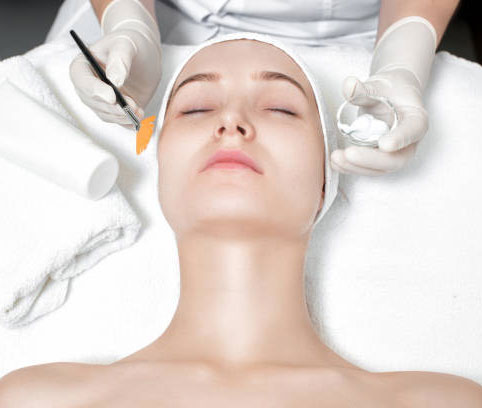
How it works
Salicylic peels work by causing controlled damage to the outer layers of the skin, which triggers a healing response. Salicylic acid is a natural defense mechanism to plants like wintergreen, birch, and willow bark. Formulated as a keratolytic solution for the skin, a salicylic acid peel works by softening the bonds that hold together dead skin cells on the top layers of the epidermis. Salicylic acid’s comedolytic (oil-dissolving) properties enable it to penetrate clogged pores and break down any bacterial infections, dead skin cells or excess sebum which may be lodged inside a pore. Stronger concentrations of salicylic acid will temporarily reduce the size of pores, helping to keep future bacterial infections small while improving the skin’s overall appearance. Salicylic acid is safe for all skin tones and types, particularly those with oily or combination skin. A salicylic peel may not be well tolerated by dry and sensitive skin types as it has the potential to cause further dryness, irritation or even increase sensitivity in these individuals. Additionally, salicylic acid is a derivative of aspirin, so individuals with known allergies or sensitivities to aspirin should exercise caution when using this peel. Salicylic acid is ideal for treating oily/acneic skin, clogged pores, and seborrheic dermatitis, and it helps reduce acne inflammation, psoriasis, ingrown hairs, wrinkles, and fine lines while improving overall skin texture and clarity.
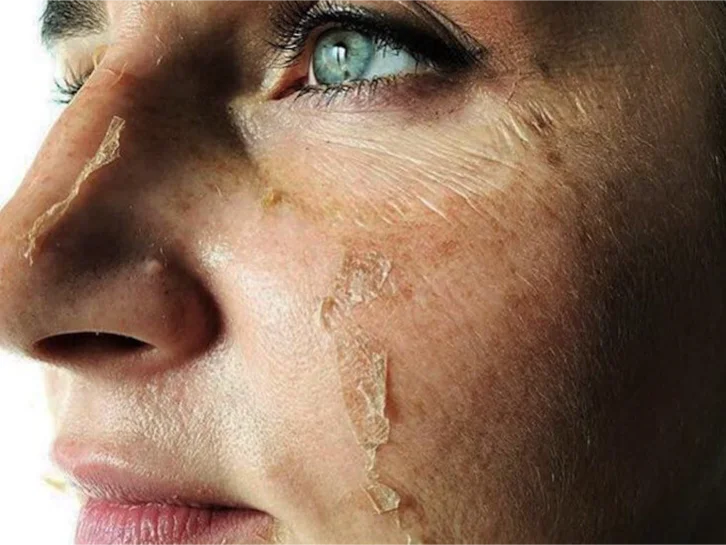
Benefits of a Salicylic Acid Peel
Comedolytic effect: Salicylic acid cleans out skin pores removing debris, dead skin cells, and oil that can clog skin pores that cause blemishes. The unplugging of dead skin cells and built-up oils prevent the development of acne blemishes
Desmolytic effect: Salicylic acid exfoliates skin cells by disrupting intercellular lipid connections. The shedding of skin cells helps keep pores clear.
Anti-inflammatory effect: Salicylic acid possesses an anti-inflammatory effect on the skin at low concentrations. Salicylic acid can lower inflammation, redness, and swelling caused by acne.
Antifungal effect: Salicylic acid is an ingredient in Whitfield’s ointment, which is used to treat fungal infections. A salicylic acid peel can also help treat fungal infections like fungal acne.
Lowers oil production: Sebum is a natural oil that moisturizes your skin. Too much oil and dead skin cells together can clog your pores and cause a breakout. Salicylic acid lowers the amount of oil in people with acne.
Improves hyperpigmentation: While not used for dark spots as often as other acids, a salicylic acid peel can help improve sunspots or melasma. Breaking down the superficial layer of the skin can help rejuvenate the skin and improve its appearance.
faqs
Dr Hudson will select a salicylic acid solution potency ranging from light (10%) to medium (20%) to deep (30%), then gently apply it to the skin. Once the skin is cleansed and prepped, the peel is then applied using a topical solution of salicylic acid to the skin using a large cotton tip applicator. This is left on for about six minutes, before being neutralized and rinsed away with water. It is normal for clients to feel a slight tingling and stinging sensation for a couple of minutes, which is temporary, but clients should not experience any major discomfort for the duration of the treatment.
Clients will experience a slight stinging and itching for 2-3 minutes as the acid penetrates the skin, but the process should not cause any significant pain or discomfort. A temporary numbing effect has been noted upon initial contact as well as redness and minor skin sensitivity. Once the peel is neutralized, the skin may appear slightly red and shiny, but this will fade within a couple of hours. A sunscreen SPF 30 is then applied. The peel may also potentially trigger a purging phase, where underlying impurities may come to the surface and new breakouts may occur. This purging period typically lasts for a brief period and is a normal part of the skin’s healing process after a chemical peel. Over the next several days, the skin will begin to peel and flake off, revealing smoother, brighter, and clearer skin underneath. Mild flaking could last from 5-7 days on average and may take longer depending on the concentration of acid used.
Once the salicylic peel has been neutralized, the skin may appear slightly red and shiny. This redness subsides in a few days and clients are advised to apply UV sunscreen SBP minimum 30 regularly for protection and to restore moisture. Clients may experience mild dryness that can be managed with a moisturizing cream. Most clients experience skin peeling within one week following a salicylic peel. Once the treatment is complete, it will take about 3-4 weeks to experience the improvement in your skin texture. After the peel, you will observe that the appearance of your acne and pimple marks reduce visibly and that your skin looks brighter.
This treatment requires multiple sessions, depending upon the severity of your skin
condition. You may need to undergo 4 to 6 peels which can be performed once
every 3-4 weeks to achieve maximum results.
results
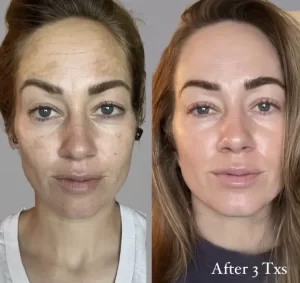
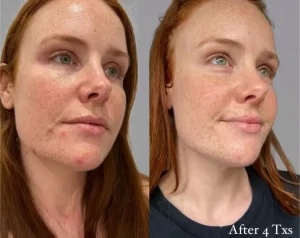
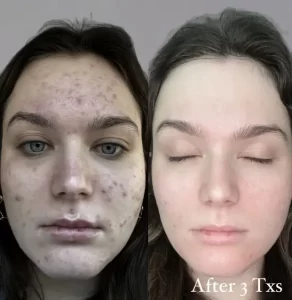
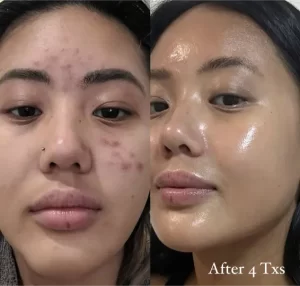
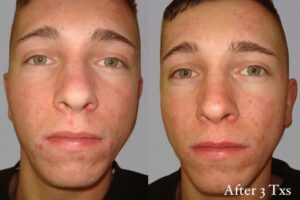
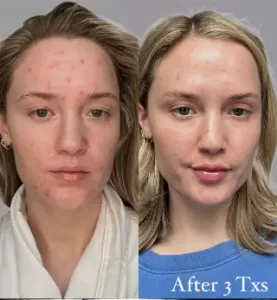
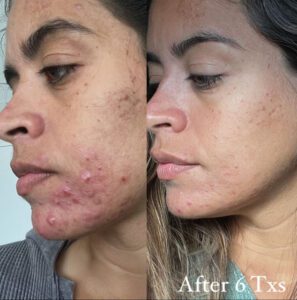

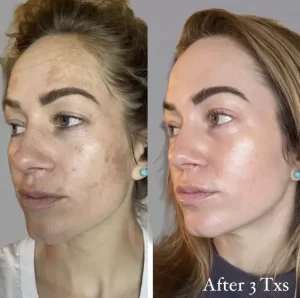
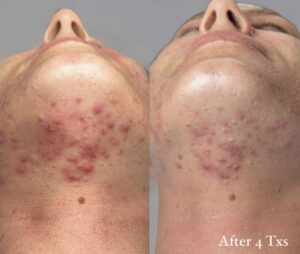
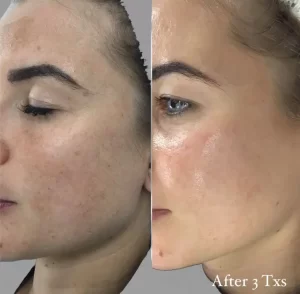
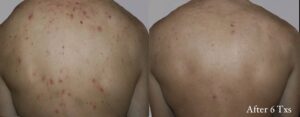
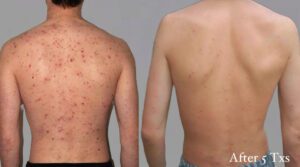
*Individual results may vary with different patient experiences.
*A series of treatments may be required for desired results.
